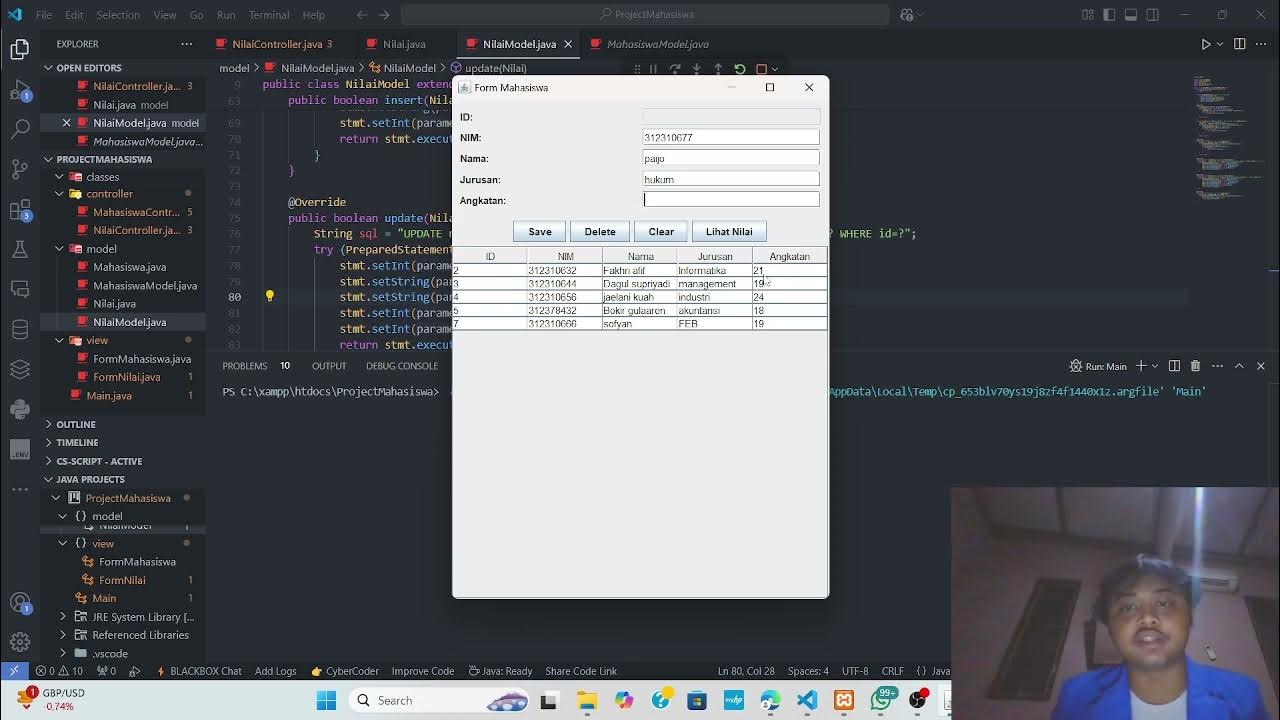Managing Assessent: Moderation
Summary
TLDRThis video outlines the process of academic moderation in a university setting. The moderator ensures consistent and accurate application of assessment criteria across all student submissions, beginning with verifying assignment briefs and continuing through a series of meetings and checks. The system evolved from sample second marking to a more comprehensive approach involving full cohort review, leading to clearer feedback and better student satisfaction. Regular moderation meetings help ensure consistency, but imperfections in grading can still occur, highlighting the challenges of maintaining perfect fairness in the process.
Takeaways
- 😀 Moderation ensures that assessment criteria are applied consistently and accurately across all students' work.
- 😀 The moderation process begins at the start of the academic year, focusing on assignment briefs, Moodle areas, and overall course structure.
- 😀 Assessment criteria were rewritten two to three years ago to align with university standards and improve presentation for students.
- 😀 The current moderation process emphasizes reviewing the entire cohort's work, not just a sample, to ensure fairness across all students.
- 😀 The moderation process evolved from a sample second marking system, which was criticized for being unfair as only a small portion of student work was reviewed.
- 😀 The university's moderation system includes detailed documents that provide step-by-step guidance for moderators and unit leaders.
- 😀 Calibration meetings are held soon after student submissions to ensure consistency in marking, and they also serve as staff development for new faculty members.
- 😀 The moderation process is generally invisible to students, but it increases transparency and reassures them about the consistency of grading.
- 😀 Feedback from internal and national surveys indicates increased student satisfaction regarding assessment and feedback, attributed to clearer documentation and communication.
- 😀 The moderation process requires timely submission of work and meeting deadlines for first marking, ensuring enough time for moderators to review and finalize grades.
- 😀 Early moderation meetings with unit teams and the moderator, involving a small sample of work, help to benchmark grading accuracy and consistency.
Q & A
What is the main purpose of the moderation process described in the transcript?
-The main purpose of the moderation process is to ensure that assessment criteria are applied accurately and consistently to students' work. This is done by following the university's guidelines and employing a moderator to verify the work throughout the academic year.
How has the moderation process evolved over time?
-The moderation process has evolved from using a 'sample second marking' system to a broader, more comprehensive approach. The new system ensures that all student work is considered and makes changes to the entire cohort rather than just individual grades.
What was the issue with the previous 'sample second marking' system?
-The 'sample second marking' system was considered unfair because only a small sample of student work was examined, and the grades of students in that sample could be adjusted, potentially impacting the fairness of the overall assessment.
How does the current moderation system work?
-The current moderation system involves taking an overview of all student work, ensuring that no individual grades are changed but rather any necessary adjustments are made to the whole cohort's grades. This process is guided by a moderator from outside the unit teaching team.
What steps are involved in the moderation process at the beginning of the academic year?
-At the start of the academic year, the moderator verifies the unit's Moodle areas and assignment briefs to ensure that the assessments are clear and aligned with the university's standards.
How is the moderation process supported and communicated to staff and students?
-The moderation process is supported by clear documentation, including a practical guide for moderators and unit leaders. The guidelines are also communicated to students through assignment briefs, outlining the process and expected timelines.
What role do early moderation meetings play in the process?
-Early moderation meetings are crucial for ensuring the accuracy and consistency of marking. Unit teams meet with the moderator shortly after submission deadlines to review a sample of student work, calibrating their marking to ensure alignment with the established criteria.
How are the results of the moderation process communicated to students?
-The results of the moderation process are indirectly communicated to students, as the process itself is largely invisible. However, students are informed about the overall moderation steps through assignment briefs and can track the progress of their work from submission to feedback.
What impact has the moderation process had on student satisfaction?
-The moderation process has positively impacted student satisfaction, as reflected in increased scores in internal and National Student Surveys, particularly in areas related to assessment and feedback.
What challenges have been encountered with the moderation process?
-While the moderation process aims to be comprehensive, there have been instances in the past two years where markers were unclear or inconsistent in applying grade boundaries. These issues were resolved, but they highlight that no system is foolproof.
Outlines

This section is available to paid users only. Please upgrade to access this part.
Upgrade NowMindmap

This section is available to paid users only. Please upgrade to access this part.
Upgrade NowKeywords

This section is available to paid users only. Please upgrade to access this part.
Upgrade NowHighlights

This section is available to paid users only. Please upgrade to access this part.
Upgrade NowTranscripts

This section is available to paid users only. Please upgrade to access this part.
Upgrade NowBrowse More Related Video

Admissions Tips: How We Review Applications

Langkah-Langkah Membuat Aplikasi CRUD Mahasiswa Berbasis MVC dengan Java

Cách QUẢN LÝ THỜI GIAN HỌC TẬP cho HS LƯỜI nhưng BẬN RỘN | Học tới đâu giỏi tới đó

SE 101 SESSION 1.3 CSU and Me (UPDATED 2024)

Lecture (15) Google Scholar Part 3

University of Passau campus tour by Nikhilesh Dhure/ Universität Passau (computer science)
5.0 / 5 (0 votes)